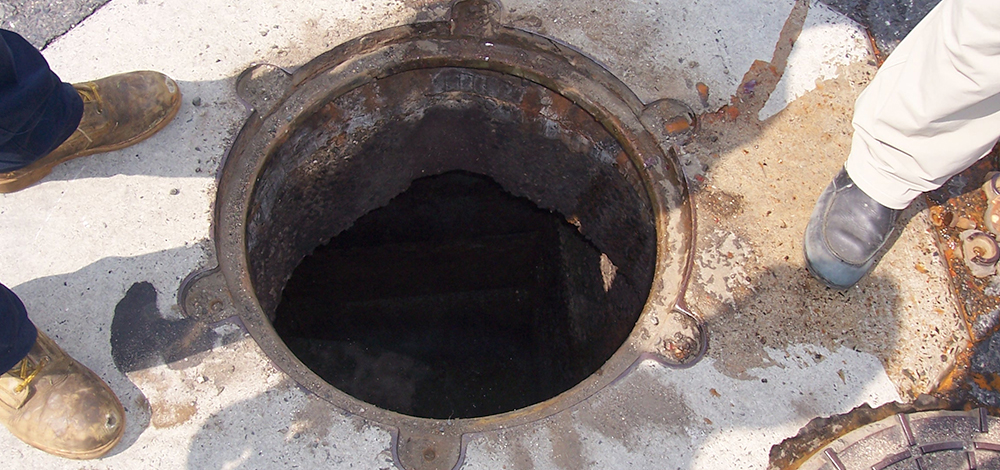Flowing Fully Flooded Influent Line Inspections
In order to inspect two gravity sewer influent siphons that ran underneath a major river, Hibbard Inshore used a swimming Navajo remotely operated vehicle (ROV). The two fully flooded lines were inspected primarily with dual sonar systems for any signs of major wear or failure. One of the lines was made of cast iron, and Hibbard Inshore devised a method to take ultrasonic thickness readings in this pipe as well. Video was not possible in these lines due to the high amount of material in the water. Because dewatering these lines was determined to not be an option due to the risk of potential stress, deformation, or collapse that process might cause, using one of Hibbard Inshore’s swimming ROVs allowed the client to collect the best possible data to look for possible open joints, holes, deformations, offsets, and material buildup in low visibility conditions without stopping flow or dewatering their pipelines.
One particular difficulty of this project was that most standard ultrasonic thickness gauges are not capable of reliable readings on cast iron. In order to solve this, Hibbard Inshore purchased a special gauge and integrated it onto their underwater vehicle. The crew was able to calibrate this gauge by using an exposed flange of the cast iron pipe to set the sensor’s speed of sound meaning that it was set for the actual pipe material found onsite. After calibration, the transducer was mounted on an actuator on the swimming vehicle that would allow it to be pressed to the pipe crown achieving perpendicular contact in order to get good readings. Since the vehicle could not confirm this contact visually, several readings were taken to establish consistency.
The inspections were done in three separate runs, entering the sewer pipes both through a manhole on the upstream side of the river and through the influent chamber on the downstream side of the river. The ROV inspected the entire 1,500 foot length of each of the 42” and 66” pipes with flows up to 2 feet per second while searching for any abnormalities. All areas of interest were recorded into data logging software along with their locations and were presented to the client following the inspection.
Through the customization of a sensor package and Hibbard Inshore’s swimming ROV, the client was able to collect previously unavailable sonar and thickness assessments of their lines without dewatering or stopping flow. Similar inspection methods can be implemented in the same manner for flowing pipes or tunnels across multiple industries.

